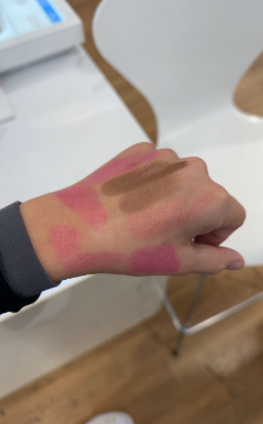
When you visit a store, you pay attention to the ingredients in the food you buy. But have you ever thought of doing the same for your makeup?
The lengthy ingredient lists on product packaging can be daunting, yet it’s essential to understand what you’re putting on your skin. After all, your face has approximately 20,000 pores, and the makeup you apply can seep into them, potentially causing issues.
A Look Back at Makeup Trends
Reflecting on the 1980s, makeup was a vibrant and bold expression of individuality. The era encouraged experimentation with color, leading to some of the most memorable makeup trends. Today, makeup continues to be a trend and a lifestyle, but it also carries risks, especially regarding our ingredients.
Toxic Ingredients in Makeup
Makeup is readily available at retailers like Ulta, Sephora, and MAC, but it’s crucial to be aware of potentially harmful chemicals, such as mercury. This toxic ingredient can be found in some “anti-aging” or “skin-lightening” products. If you see terms like “mercurous chloride,” “calomel,” “mercuric,” “Mercurio,” or simply “mercury” on the label, it’s vital to stop using that product immediately. Mercury exposure can lead to serious health issues, including neurological problems, reproductive damage, and even cancer.
Federal law mandates that all cosmetics must list their ingredients. Never use an unlabeled product, as it may pose significant risks to your health.

Why Ingredients Matter
It’s essential to scrutinize makeup labels to understand how products may affect your skin. For instance, if you have acne-prone skin, certain ingredients like parabens, synthetic fragrances, or soybean oil could exacerbate your condition. By identifying potentially harmful substances, consumers can make more informed decisions and avoid products that might cause irritation or breakouts.
Senior Brynn McPeak admitted, “No, I don’t look at my makeup ingredients, but I would if I had allergies.” She shared her experience with “The Elf Power Grip Primer,” noting, “It caused me to break out.” McPeak’s case highlights the importance of understanding what goes into everyday skincare and cosmetic products, even if you’re not typically sensitive to ingredients. Breakouts, irritation, and allergic reactions can often be linked to something as simple as a hidden additive or preservative, making label reading a valuable habit for anyone using makeup regularly.
For individuals with more sensitive or reactive skin, dermatologists often recommend opting for non-comedogenic products explicitly formulated to avoid clogging pores. Paying attention to labels, whether you’re prone to acne or not, can help prevent unwanted reactions and ensure the products you use are aligned with your skin’s needs.
The Role of Social Media
In today’s world, social media heavily influences makeup choices. Are influencers using their platforms to promote safe products? It’s easy to get swept up in trends and purchase items based solely on others’ recommendations. Before making a purchase, take the time to research ingredients and assess their safety. Many people invest heavily in cosmetic procedures like Botox, lip fillers, and false eyelashes, highlighting the significance of makeup in modern lifestyles.
Senior Christina Hance-Aloi, an employee at Ulta, shared her thoughts on the influence of social media on makeup purchases. “Yes, it mostly stems from TikTok,” she said. When asked about product shelf life, she noted that it varies from six to twelve months.
Building Trust with Brands
While many brands have established trust and connections with their customers, doing your own research is wise. The Environmental Working Group’s Skin Deep database is an excellent resource for checking product safety.
Mayeli Romero explains how she trusts brands, “I believe that a brand is trustworthy if they have a lot of samples and pictures. I like to see brands who have makeup on models that have different skin tones and different skin types because it makes it clear that it works.”
By being mindful of the ingredients in your makeup, you can make informed choices that benefit your health and enhance your beauty routine.









